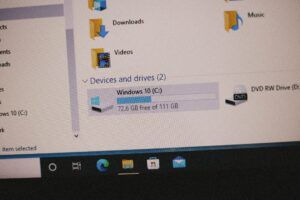How to Free Up Space on Your Smartphone

How to Free Up Space on Your Smartphone
The lack of available storage space is one of the most widespread issues that users encounter when it comes to modern smartphones, despite the fact that these phones are loaded with great cameras, applications, and other capabilities. It is a common occurrence that storage space runs out more quickly than anticipated. This results in sluggish performance and frequent warnings of “low storage,” regardless of whether it is photographs, movies, or applications that are being stored. Not only does freeing up space on your device help it work more smoothly, but it also guarantees that you will always have enough capacity for the data and applications that are most important to you.
Examine the programs that are using your storage space
The first step is to determine what is occupying the space. The majority of smartphones come with built-in utilities that display the way storage is split up across applications, images, movies, and system data. You may verify this on an iPhone by navigating to Settings, then General, and then iPhone Storage. If you are using Android, you may access the storage settings by navigating to Settings and then Storage. When you are aware of what is taking up the most room, you are better equipped to make a decision on where to begin the cleaning process.
Remove Applications That Are Not in Use
We download applications that we hardly ever use throughout the course of time. In addition to using space on your device, these applications may also be running in the background. Examine all of the applications on your device, and then remove any that you do not need. If you are not sure, check the “Last Used” date in your storage settings and delete anything you have not opened in several months.
Remove the contents of your cache as well as your temporary files.
In order to increase efficiency, apps store temporary data known as cache, but over time, this cache may consume terabytes of storage space. You can delete the cache on Android by going to Settings, then Apps. On some iPhone applications, the cache may be cleared from within the application’s settings. The process of deleting cached files at regular intervals may clear up a large amount of space without causing any loss of vital data.
Transfer Videos and Pictures to Storage on the Internet
Both high-resolution photographs and 4K films need a significant amount of storage space. You may back up your material and then securely erase the local copies of that data by using cloud services like Google Photos, iCloud, or OneDrive. In addition to this, several of these services have “Optimize Storage” settings, which allow you to save full-resolution files in the cloud while maintaining smaller copies on your device.
Move files to a computer or an external storage device
You may manually transfer images, movies, and documents to a computer or an external storage drive if you would want to avoid depending on online storage. This makes a safe backup and offers your smartphone more space to breathe.
It is better to stream content than to download it.
When music, films, and podcasts are downloaded, they use a great deal of storage space. Instead of keeping massive media files saved on your computer, you may want to think about utilizing streaming services. In addition, a large number of applications provide you the ability to establish boundaries on the amount of offline material that they are capable of storing.
Remove All Attachments and Messages That Are Outdated
Text messages and chat applications, particularly those that include discussions that are rich on media, have the potential to discreetly use a significant amount of space. Examine your messaging applications and remove any outdated conversations or huge attachments that you no longer want. Once a certain amount of time has passed, messages may be deleted automatically by certain applications.
Maximize the Storage Capacity of Your Applications
Over the course of time, certain applications, such as social media sites, gather data that is concealed from the user. In order to find storage management tools, go through the settings of each application you have installed. As an example, YouTube gives you the ability to limit your offline downloads, while WhatsApp enables you to remove huge files and handle talks on an individual basis.
Make Use of Lite Versions of Applications
“Lite” versions of popular applications, such as Facebook, Messenger, and Twitter, are available for download; these versions take up less space and require less resources. In the event that there is a restriction on the amount of storage available, switching to applications that are less memory-intensive may result in savings of hundreds of gigabytes.
Either empty your trash or your recently deleted folder.
Before they are permanently deleted, photographs and information are stored in a “Recently Deleted” folder on a number of cellphones for a period of thirty days. Make certain that you clear this folder in order to genuinely save up space.
For devices that support it, consider using an SD card.
A number of Android devices have the ability to increase the amount of storage available via the use of a microSD card. Moving images, movies, and even applications to external storage may significantly improve the amount of space available without destroying any of the files.
Make sure that your device is updated and maintained on a regular basis.
Updates to software often result in improvements to storage management and optimization of system files. It is important to make sure that your smartphone is up to date so that you can take advantage of all the most recent enhancements. To avoid the accumulation of storage problems, include this with a cleaning program that is performed on a regular basis.
The experience of reaching the limit of storage on your smartphone is exasperating, but if you use a methodical approach, you may recover space and enhance performance. Start by determining which items use the most space, then proceed to remove applications that are no longer in use, handle media in a sensible manner, and utilize either cloud storage or external storage. Your smartphone will continue to be quick, responsive, and prepared to store the things that are most important to you if you do routine maintenance on it.




